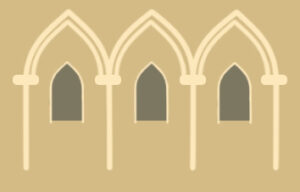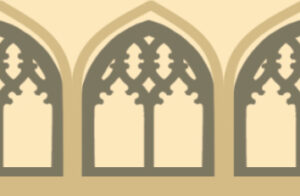Decoding History Through Arches: Your Essential Guide to Recognizing Architectural Arches in European Cities
Who cares about arches, right? Well, surprisingly, arches tell us a lot about the buildings, like when it was built or if it has been restored. Use this guide to spot the arches around the town!
Let this guide help you read its history through its arches. Trust us; it’s like urban archaeology without the dust!
Round Arches – 1st to 12th Century (383-1100)
 This arch dates back to ancient Roman architecture, making these buildings the oldest in the town. It wasn’t until the 12th century that the round arch became outdated due to the need for taller structures.
This arch dates back to ancient Roman architecture, making these buildings the oldest in the town. It wasn’t until the 12th century that the round arch became outdated due to the need for taller structures.
Think of a round arch as the building’s “wise old grandparent.” These arches continued to be widely used until the 12th century. The round arch is an elegant testament to the foundational techniques that influenced European architecture for centuries.
Pointed Arches – 12th to 14th Century (1100-1300)
 The pointed ‘Gothic’ arch evolved from the Roman round-arch. This arch is formed from two (or more) intersecting curves that meet at a central apex or point. Its main structural advantage over the round arch is its height and the creation of rectangular bays.
The pointed ‘Gothic’ arch evolved from the Roman round-arch. This arch is formed from two (or more) intersecting curves that meet at a central apex or point. Its main structural advantage over the round arch is its height and the creation of rectangular bays.
Move over, round arch; here comes the pointed arch, the hallmark of Gothic style! The architectural shift wasn’t merely for aesthetics—its main advantage was structural. Offering architects the luxury to create expansive, light-filled interiors and, yes, those stunning stained-glass windows that define Gothic cathedrals.
Late Gothic Arches – 14th to 16th Century (1300-1500)
 Late Gothic arches encompass many geometrical variations from the early 14th-century style and evolved throughout the early Renaissance period until as late as the year 1500. Elevation and high vaults were achieved with thinner, lighter, and more intricate tracery.
Late Gothic arches encompass many geometrical variations from the early 14th-century style and evolved throughout the early Renaissance period until as late as the year 1500. Elevation and high vaults were achieved with thinner, lighter, and more intricate tracery.
Welcome to the era of ‘Architectural Couture.’ It’s like the architects went from handwriting to calligraphy. By utilizing thinner, lighter, and intricately detailed tracery, these arches set the stage for the early Renaissance’s innovative techniques.
______
Whether you’re an avid traveler, a history buff, or someone who simply appreciates the hidden nuances of urban landscapes, recognizing arches can enrich your experience and deepen your understanding of European history. So, get out there and start identifying those arches; you’ll be an architectural detective in no time!


